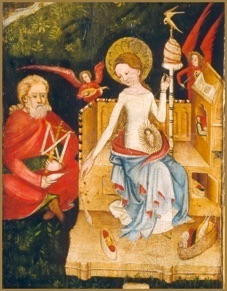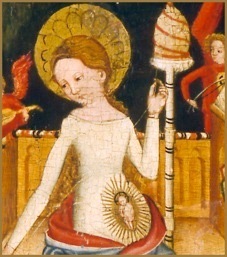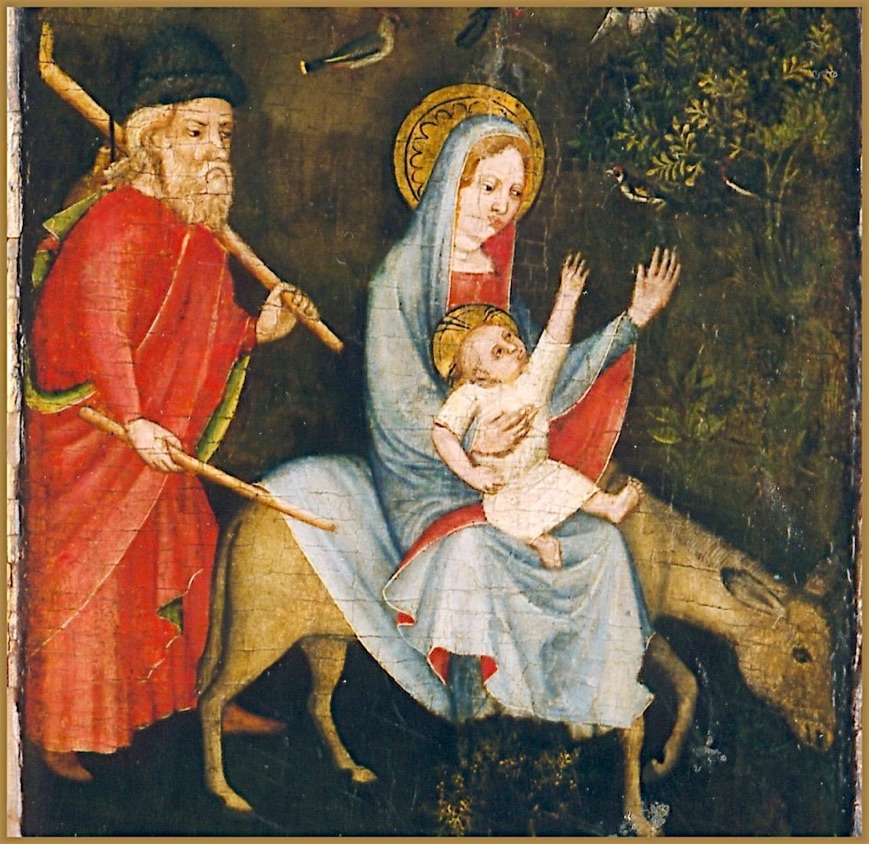The Digitalisation Project Castle Huis Bergh is the intellectual property of the Stichting Musick’s Monument. Ing Hans Meijer was responsible for the technical realisation; Dr Willem Kuiper for the scholarly input. Thanks are also due to the Anjer Cultuurfonds Gelderland; the Stichting de Verenigde Stichtingen “De Armenkorf” in Terborg and “Het Gasthuis te Silvolde”; Mrs P. Tijdink-Hermsen; Mrs L.J.C. Meijer-Kroonder; and the Giese family.








Escape to Egypt 1380-1400
On the front of the panel a holy bishop is depicted (not shown here)
Two altar wings:
1. Mary happily expecting a child
2. The escape to Egypt
Tempera on linen; pine frame. Origin is very uncertain. In notes about the work, Cologne, Tyrol, Southern Germany and Hamburg are mentioned. The left wing of this probably Bohemian panel shows a very domestic scene: Mary spinning wool and Joseph winding woollen yarn, thus indicating that they are preparing for the winter time. Mary is pregnant, the child clearly visible in her womb, as if seen through an x-ray, and already radiating its divine light. The heavenly father, emanating light that permeates the entire Creation, sits above the whole scene, actively present.
The voluptuous seat of Mary indicates their Nazarene home, and precedes the Home of the Child, after returning home from Egypt. The divinity of the scene is indicated with beautiful allusion to the earthly Paradise: angels making music, beautiful plants, and animals roaming freely. The little bird next to Mary is a pelican, symbol of Christ. A manuscript from the early middle ages, the Phisiologus, explains the connection between the pelican and Christ: The pelicans chicks misbehave in such a manner that they are slain by their own parents. After three days, however, they regret their deed, and one of the parent birds bites its own chest, and drips its own blood on to the dead chicks. The chicks come to life again, but the parent dies. Just as the pelican was vengeful upon its children, the Phisiologus explains, visited vengeance on His People. And, like the pelican slew its chicks with a wing, God smote His People with sin. The Redeemer sacrificed his own life, as did the pelican, and thus the pelican -which doesn’t behave like this normally- was seen as an allegorical symbol of Christ. In painting the pelican, the painter shows us the tragedy at hand, the terrible fate of the yet unborn Child. On the right wing of the panel we see Mary, Joseph and the new-born child on their way to Egypt, fleeing from king Herod. This king had heard about the birth of a King to come, and in a jealous rage ordered all male babies under the age of three to be killed. A donkey carries Mary and the baby to the land of their forebears. The donkey makes three appearances in the accounts of Jesus: in the stable, or grotto when he was born; in the flight to Egypt; and the entry into Jerusalem, where Jesus was carried by a donkey, in the final stage of his public ministry. Despite the gruesome reason behind their escape, the scene is peaceful: wild animals accompany the holy family, birds approach the child, who stretches.
